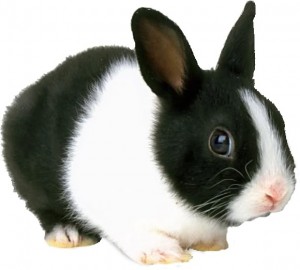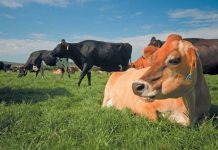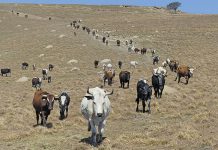CHOICE OF LAND
Well-drained piece of land. Select a site with special attention to drainage and waste disposal.
BREEDS
- New Zealand
- Californian
- Chinchilla.
- Flemish Giant
DESIRABLE CHARACTERISTICS
- Good vigour
- Healthy disposition
- Brightness of eyes
- Alertness
- Smooth and glossy fur
- Good front and hind legs
- Good tail carriage
HOUSING
- Building: Make sure the housing is designed to provide enough fresh air and shade.
- Hutches – Two types are recommended.
- Wood: Bamboo hutch. Treat bamboo with solignum or old crank case oil for preservation.
- Wood: Wire hutch – use 1⁄2” mesh chicken wire or 1⁄2” square stainless wire for the floor and 1⁄2” mesh chicken wire for the sides.
- Hutch dimensions: 78 x 68 x 48 cm raised 90 cm above the ground.
- Nest or kindling box Dimensions: 45 cm long, 30 cm wide and 30 cm high. One end should have an opening at least 25 cm wide and 15– 20 cm from the floor.
MANAGEMENT PROCEDURE
- Females should be mated 2–4 weeks after they have kindled, so as to have 6—7 litters per year.
- Choose young females with good production potential to replace old or culled does (females)
- Replacement of the males should be done systematically once a year.
- Record keeping is essential for the doe, buck and litter production.Records should include Doe number, Buck number, Date purchased, Date bred, Number kindled, Number dead, Number alive, Date weaned, Number weaned, Sex, and Date sold.
FEEDING
This could be mash or pellet.
Poultry growers or layers mash is recommended to replace pellet if need be. Feed rabbits twice a day with grain feed in the morning and green feeds in the evening.
HOUSE MIXING – GRAIN FEED
A farmer can mix his/her own feeds from the following ingredients: guinea-corn, brewers spent grains, maize, groundnut cake, soyabean meal, palm kernel meal, cassava peel, rice offal, kolanut pod meal, millet, sorghum, bone meal and salt. It is best to grind the ingredients before mixing.
GREEN FEEDS
Asphilia africana (Yoruba – yunyun)
Talinium triangulare (Yoruba – Gbure)
Amaranthus spp. (Yoruba – Efo tete)
Sweet potato leaves (Yoruba – Ewe Anamo).
Elephant grass
Guinea grass
Pangola grass
Gamba grass
Centrosema
Wash these green feeds in salt water before feeding.
WATER
- Keep ample supply of fresh water in the hutches at all times.
- Salt: Make sure rabbits are supplied with salt, either mixed in the feed or dissolved in the drinking water.
- Diseases
- Common rabbit diseases are: diarrhoea, coccidiosis, conjunctivitis, ear canker, and pneumonia. Consult your veterinarian for medical advice.
FIRST AID TREATMENTS
- Diarrhoea: Withdraw concentrate feed for 12 hours and introduce green feed thereafter.
- Ear canker: Remove the crusts, dress the ear with liquid paraffin oil and iodine.
- Dysentry: Treat with guanimycin syrup or tablet and thalazole tablets. “Efinrin” leaf juice in drinking water has been found to be effective.
The information for this Production Guide was obtained from Extension Research Liaison and Training Unit National Horticultural Research Institute (NIHORT) Idi – Ishin, Ibadan.






